1. Farrell’s Ice Cream Parlour
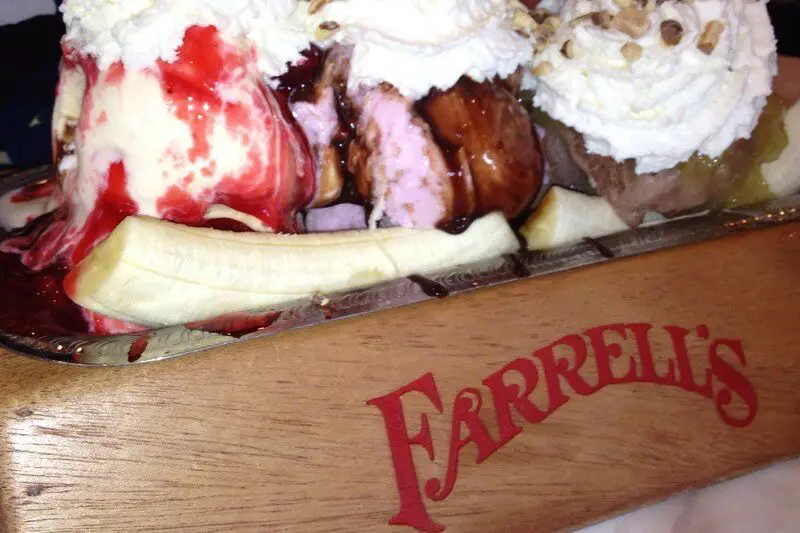
If you grew up in the ‘70s or ‘80s, chances are you remember Farrell’s. This over-the-top ice cream parlor was known for its massive “Pig’s Trough” sundae and a team of servers who sang loudly whenever it was someone’s birthday. The gimmick was all about creating a spectacle, with drums, whistles, and an old-fashioned candy shop vibe that kept kids glued to their chairs. The energy inside was almost carnival-like, with nostalgia for a simpler time baked right into every scoop.
Of course, the overindulgent desserts were part of the fun. Kids dared each other to order giant sundaes, while parents secretly enjoyed the throwback décor. Farrell’s leaned so heavily into its gimmick that it sometimes overshadowed the food itself, but for many families, the experience was the point. While a few Farrell’s locations made comebacks in later years, the chain never fully regained its former glory.
2. Medieval Times
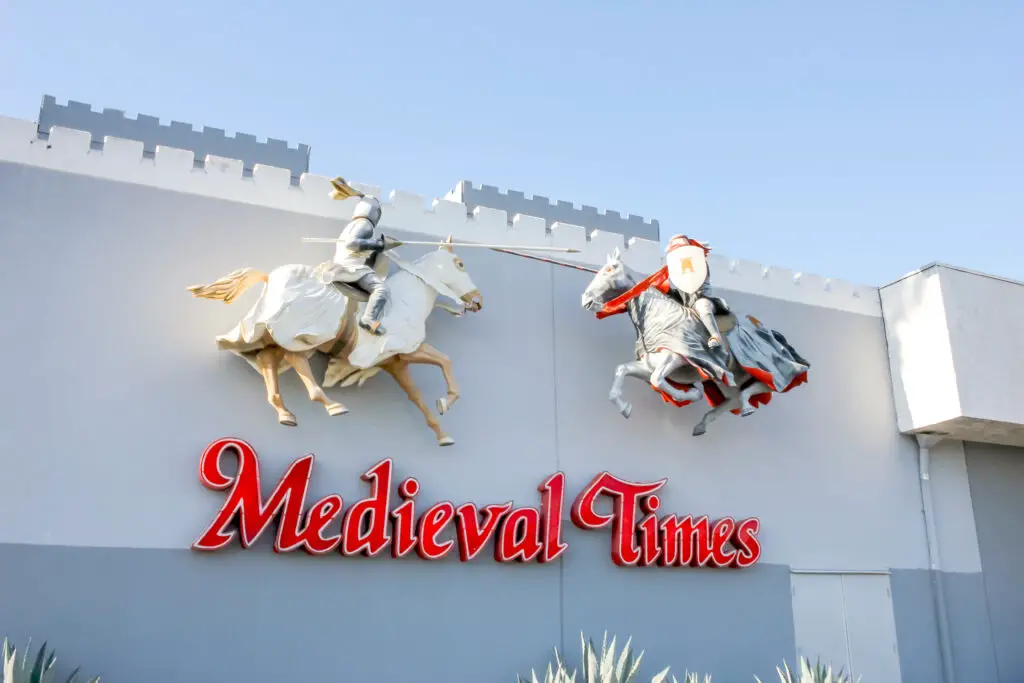
Sure, it still technically exists in some places, but Medieval Times was at its peak of popularity when it was marketed as a full-blown dinner theater in the ‘80s and ‘90s. Diners weren’t just eating chicken legs and soup, they were transported into a jousting tournament with knights, royalty, and horses thundering around an indoor arena. The catch? You had to eat everything with your hands, just like in the Middle Ages.
For families, it was half-meal, half-theme park, and the theatrics often overshadowed the actual food quality. Still, kids loved cheering for their assigned knight, and the show made dinner feel like an event. The gimmick worked for a while, but not everyone wanted to pay for dinner and theater at the same time, making it more of a novelty than a go-to restaurant.
3. Automat Restaurants
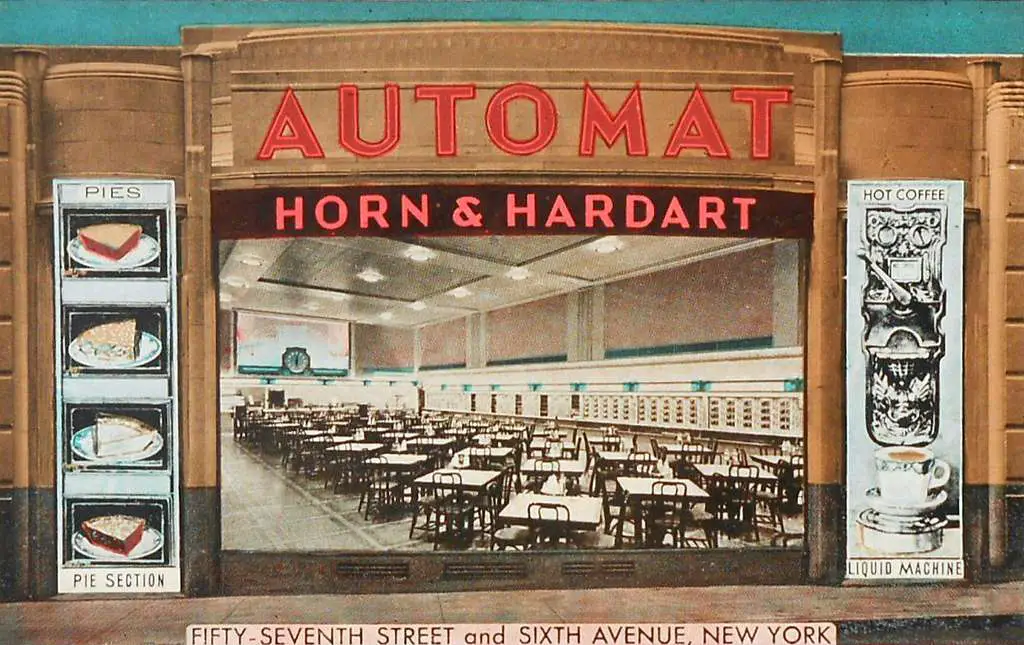
Before fast food chains took over, the automat was considered futuristic. Instead of servers, walls of coin-operated glass boxes dispensed pies, sandwiches, and hot meals. You’d pop in a few nickels, open the little door, and grab your food—no human interaction required. It was dining as entertainment, especially in cities like New York and Philadelphia where automats became urban icons.
The gimmick was built on novelty and convenience, but as time went on, fast food chains offered quicker and cheaper meals. Once microwaves and drive-thrus became standard, the automat seemed clunky and outdated. While it was an exciting peek at “the future” back then, the charm faded fast, and most were shuttered by the 1970s.
4. Rainforest Café
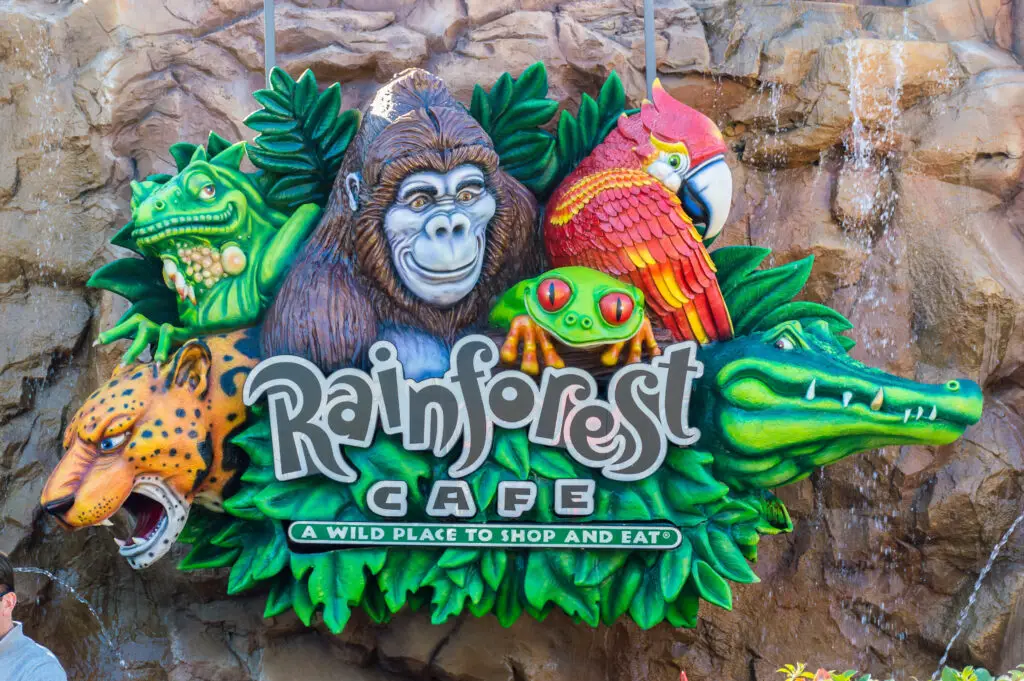
Walking into a Rainforest Café felt like stepping inside a Disney ride. The restaurant was filled with animatronic gorillas, elephants, and tropical storms that rolled through every half hour. Kids couldn’t get enough of the thunder-and-lightning effects while trying to eat their chicken fingers under a jungle canopy. It was like dining in the middle of an adventure movie.
The food, on the other hand, often took a backseat to the show. Critics joked that people went for the “indoor thunderstorm” more than the menu. While a handful of locations still exist, many closed as the gimmick wore thin. Once you’d seen the mechanical elephants a few times, the magic faded, and the novelty couldn’t keep up with the prices.
5. Planet Hollywood
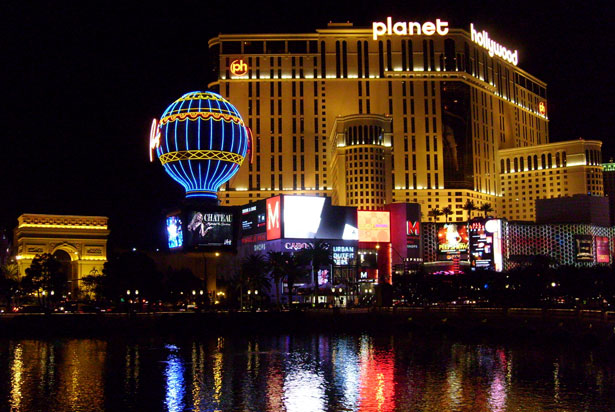
In the ‘90s, Planet Hollywood was everywhere. Backed by big-name stars like Arnold Schwarzenegger, Sylvester Stallone, and Bruce Willis, it promised a glamorous Hollywood dining experience. The restaurants were decked out with movie props, from costumes to actual set pieces, making it feel like you were inside a pop culture museum.
The gimmick was clear: eat average food while sitting under Batman’s cowl or Indiana Jones’ whip. It worked for a few years when celebrity culture was at its peak, but the food never lived up to the hype. Once the star power faded, so did the excitement, leaving behind a string of bankruptcies and shuttered locations.
6. Jekyll & Hyde Club
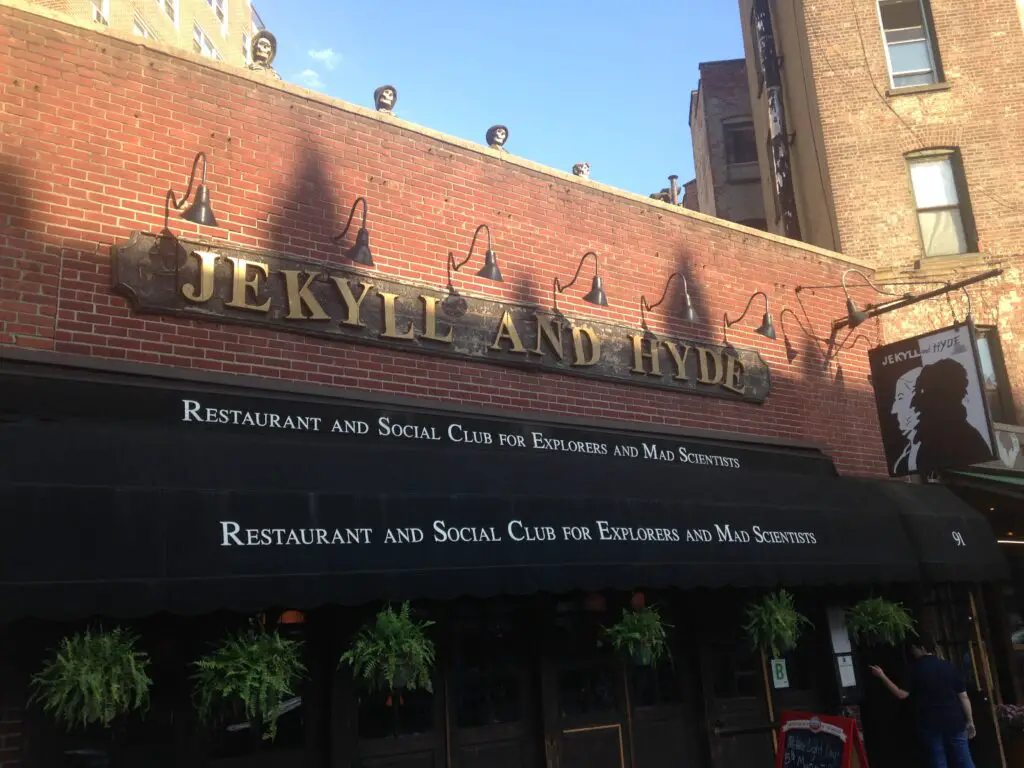
This restaurant was pure theater. Styled after Victorian horror stories, the Jekyll & Hyde Club featured creepy décor, costumed actors, and animatronics that “came alive” during your meal. Skeletons rattled, portraits moved, and actors mingled with diners while performing darkly comedic skits. It was dinner with a haunted house twist.
While tourists adored the spooky fun, locals often avoided it, calling the food overpriced and underwhelming. The gimmick kept people talking, but it wasn’t sustainable when the novelty wore off. Eventually, most locations closed, leaving behind memories of one of the strangest themed dining experiences in America.
7. Sambo’s
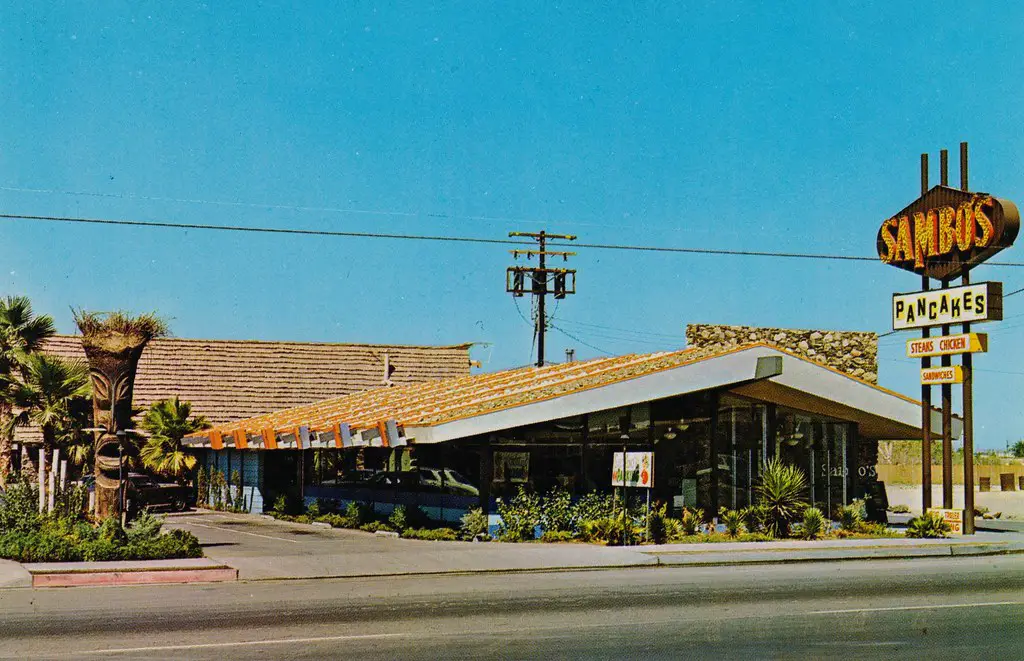
This chain grew quickly in the mid-20th century but was built entirely around a questionable gimmick. The name and branding leaned heavily on outdated and offensive stereotypes, which ultimately led to its downfall. For a while, the restaurants marketed themselves as family-friendly breakfast spots, but their gimmick was impossible to separate from the controversy.
As the civil rights movement gained momentum, public backlash forced many of the restaurants to change names or close entirely. While some tried to rebrand under different titles, the damage was already done. Sambo’s is remembered less for its food and more for how its gimmick symbolized a cultural misstep that couldn’t survive changing times.
8. Casa Bonita
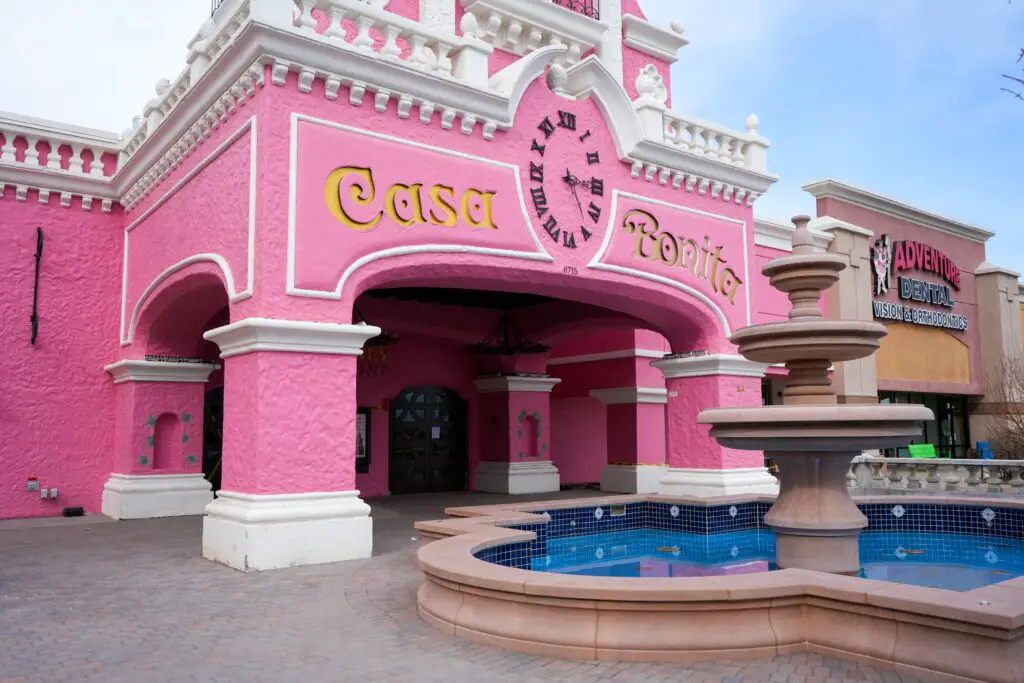
Made famous by South Park, Casa Bonita in Colorado was a Mexican restaurant that felt more like a theme park. Inside, there were cliff divers, puppet shows, and even a cave to explore while waiting for your food. Families could spend hours inside without ever realizing they were still technically at a restaurant.
The gimmick made it iconic, but not necessarily for the cuisine, which was often panned by critics. People went for the entertainment, not the enchiladas. While the restaurant has been revived recently, for years it was the ultimate example of a gimmick overshadowing the meal itself.
9. Kaboose Kids

This chain leaned entirely on its kid-centric gimmick. Each dining booth was shaped like a mini train caboose, giving kids the feeling of riding the rails while munching on burgers and fries. It was part playground, part restaurant, and parents often used it as a reward for good behavior.
The problem was, kids loved it, but adults didn’t. The menu was simple, the food was uninspired, and parents often dreaded the chaos inside. Without repeat visits from grown-ups, the chain couldn’t last, and the cabooses were eventually retired to nostalgia.
10. Mars 2112
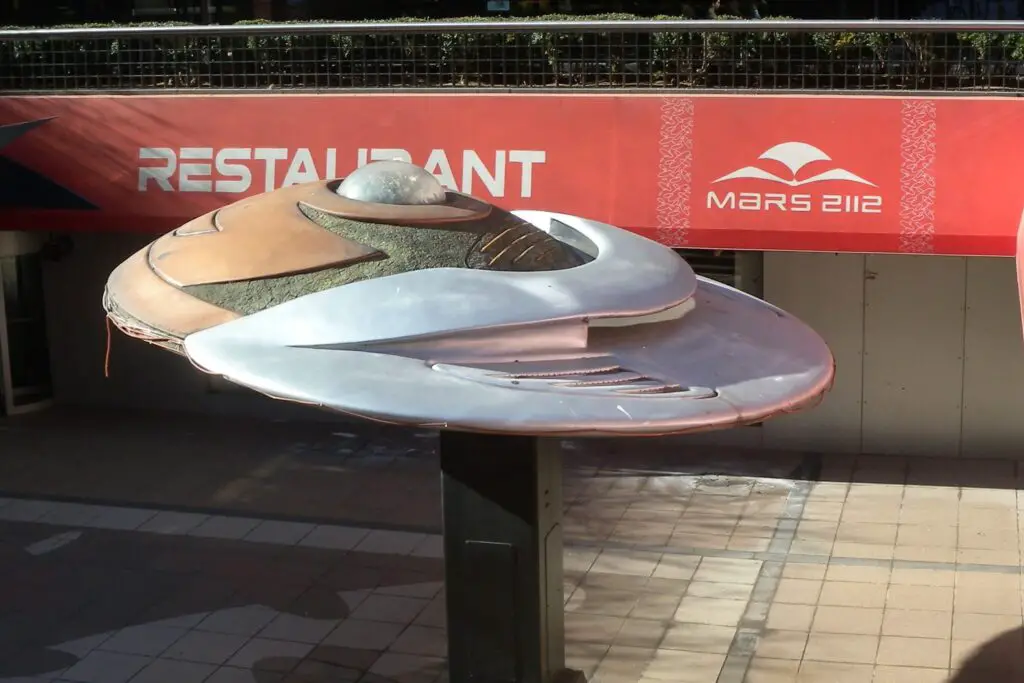
Dining at Mars 2112 in New York was like stepping into a sci-fi movie. Guests were “transported” to Mars in a motion-simulator ride before entering the massive space-themed dining room. Staff dressed as aliens wandered around while you ate burgers under glowing planets and asteroid decorations.
The gimmick was impressive in its scale, but it didn’t make the food taste better. Reviews often complained that while the atmosphere was fun, the menu was pricey and average. It became a tourist trap rather than a regular dining destination, and eventually, the high operating costs forced it to close.
11. All Star Café
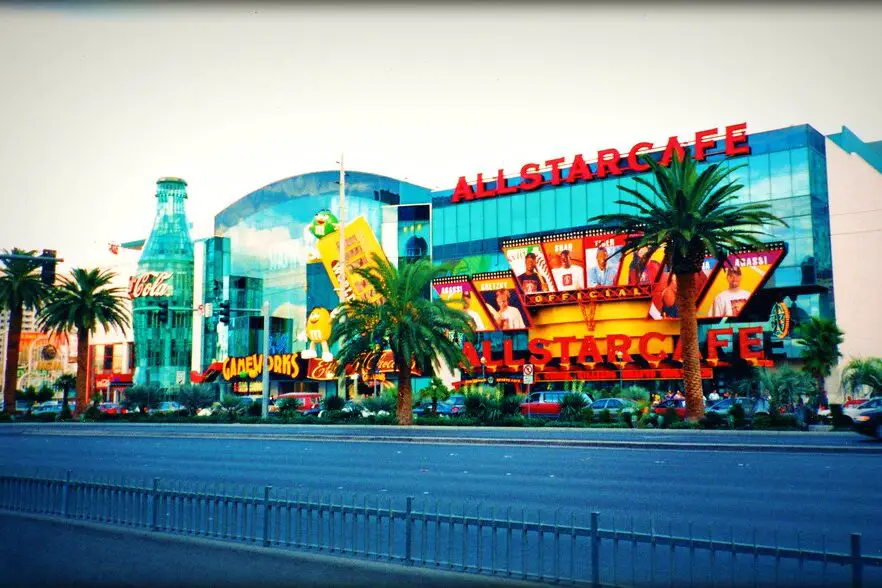
If Planet Hollywood had movie stars, All Star Café had athletes. Launched in the ‘90s by names like Shaquille O’Neal and Wayne Gretzky, the restaurants featured sports memorabilia and giant TV screens playing nonstop games. Sports fans were supposed to feel like they were eating inside a shrine to athletics.
Unfortunately, it suffered from the same problem as its Hollywood cousin: the gimmick was stronger than the menu. Once the excitement of eating under Michael Jordan’s jersey wore off, the overpriced food left diners unimpressed. The hype burned out quickly, and most locations closed within a few years.
12. Ed Debevic’s
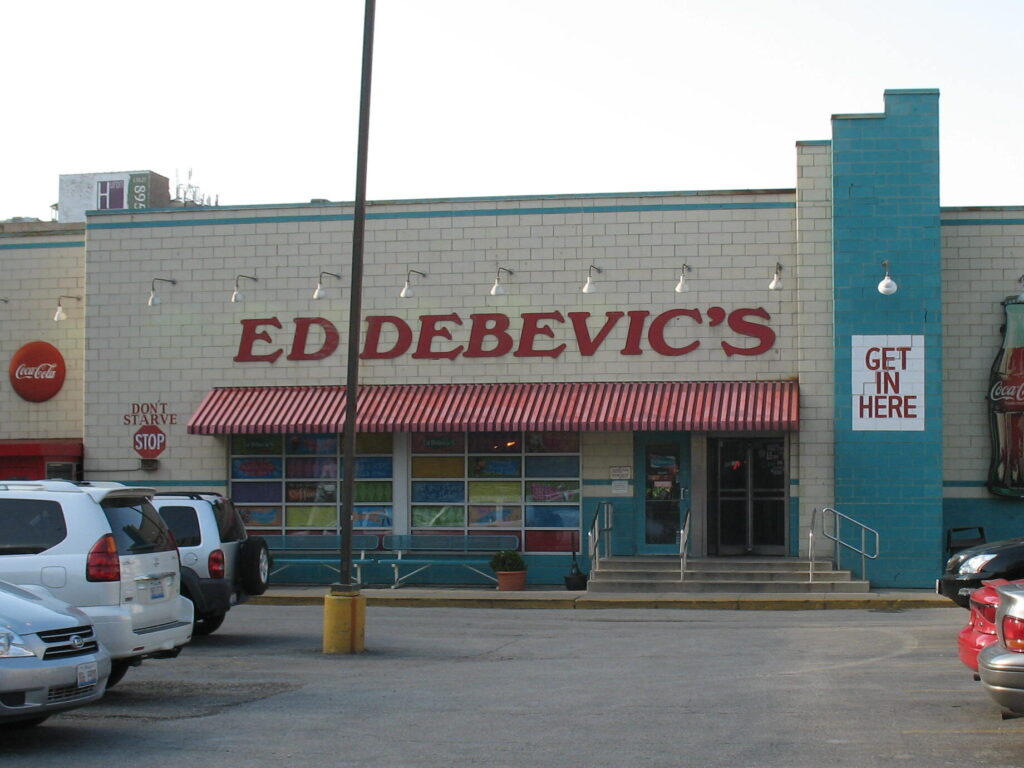
This Chicago staple was known less for its food and more for the intentionally rude servers. Waitstaff snapped at customers, tossed straws at tables, and even made sarcastic comments about menu choices. It was all part of the act, and for some, the experience was hilarious. For others, it was uncomfortable.
The gimmick worked for a while because it was so different from the typical “customer is always right” philosophy. Diners came for the sass as much as the burgers and fries. Still, the novelty had limits, and locations outside of Chicago never gained the same popularity. Many closed as the joke wore thin.
13. Cluck U Chicken
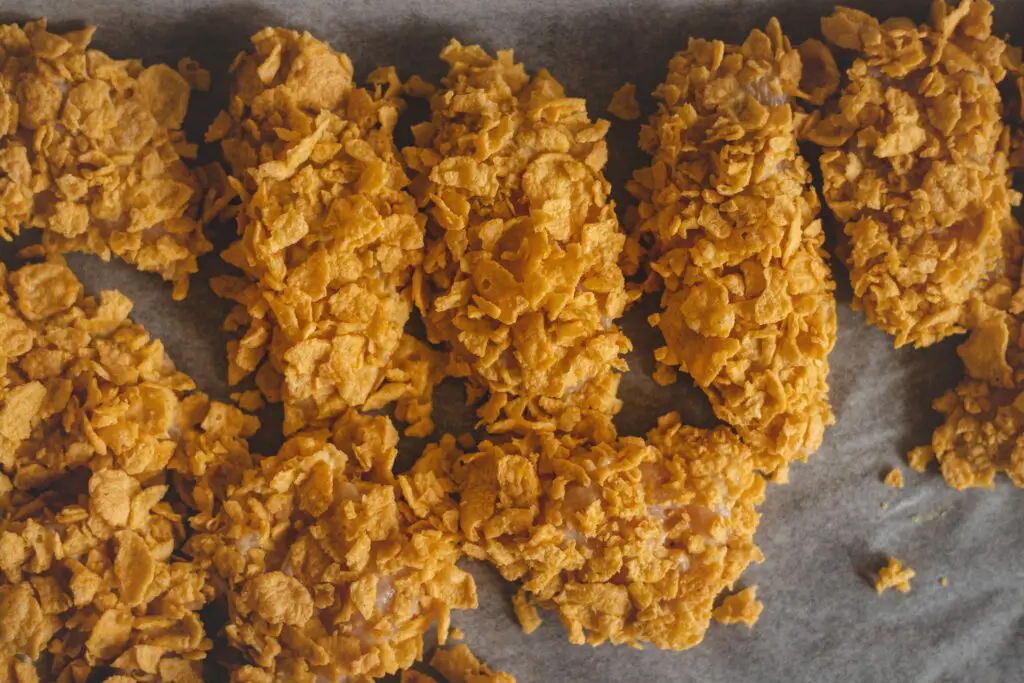
This regional chain made its name on outrageous spiciness. Their hottest sauces were advertised with cartoonish warnings and dare-style names, challenging customers to see if they could handle the heat. It was part restaurant, part endurance test, and friends often dared each other to order the hottest thing on the menu.
While it was fun for college kids and spice fanatics, it didn’t always translate into sustainable business. Many locations burned out (pun intended) as customers grew tired of the gimmick. Today, it’s remembered as one of those restaurants that was more about bragging rights than dining satisfaction.
14. Magic Time Machine
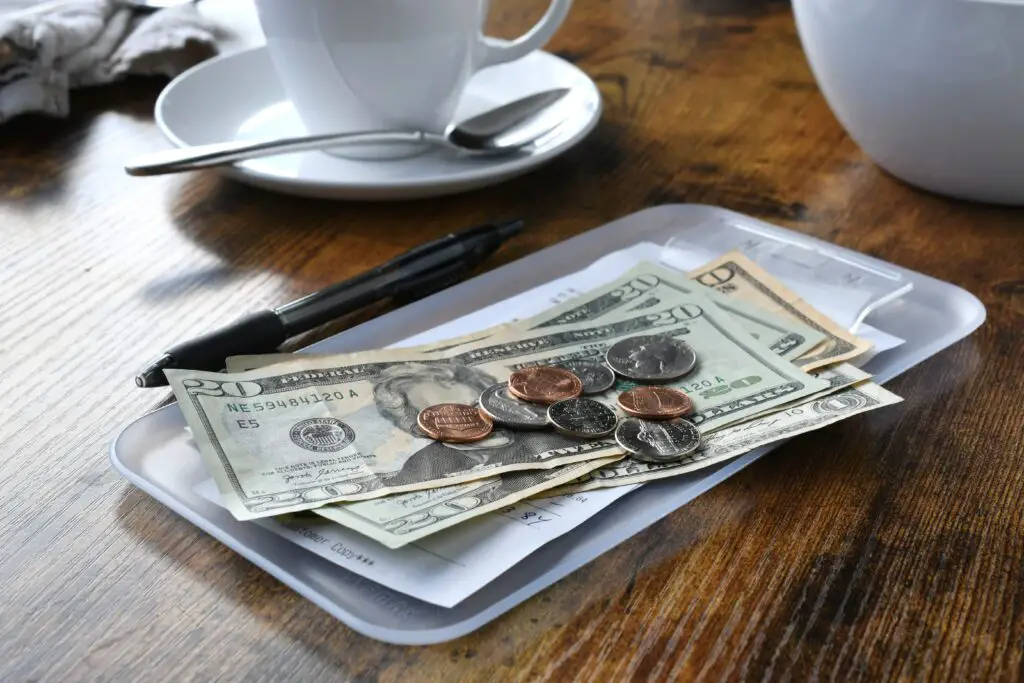
Dining here was like stepping into a costume party. Servers dressed as characters ranging from pirates to superheroes, and the décor felt like a mash-up of a carnival and a movie set. Guests never knew who might bring their food—one night it could be a wizard, the next a cowboy.
The gimmick was pure chaos but also a big draw for families and groups. It made birthdays and celebrations feel unique, even if the food was average at best. While a couple of locations still survive, most are long gone, remembered fondly as a quirky relic of themed dining.
